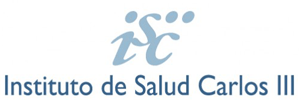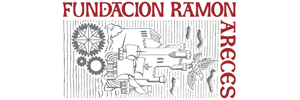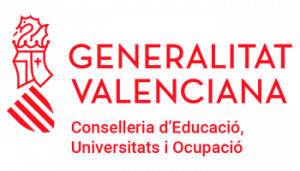MOLECULAR BASES AND PROGNOSIS BIOMARKERS FOR RARE NEURODEGENERATIVE DISEASES
A disease is defined as rare when it affects fewer than 1/2,000 people; most rare diseases are hereditary, paediatric, debilitating and lack of treatment. Our laboratory is interested in studying movement disorders and ataxia/spastic paraplegia. Our specific lines of research are focused on:
- Genetic bases. These groups of diseases are characterized by wide genetic heterogeneity and many genes involved remain unknown. Our work aims to discover new genes and mutations, thereby improving the clinical and genetic diagnosis of rare diseases.
- Gene modifiers. All these diseases present with a great variable expressivity. We aim to identify variants that, in addition to the causative mutations, contribute to the clinical outcome.
- Prognostic biomarkers. We characterize the profiles of miRNAs, metabolomic / lipidomic and microbiome associated with the clinical picture of Wilson’s disease for their use as biomarkers that allow us to anticipate the evolution of the disease.
- New therapies. We developed a human CPC (Cerebellum Purkinje Cell) cell model for the investigation of a severe paediatric disease PLAN (PLA2G6-associated neurodegeneration) in which to perform drug screening.
Presentation
Get to know us better
Research Staff
The people who make it all possible
Carmen Espinós Armero
cespinos@cipf.es
Esther Martinez Martinez
emartinez@cipf.es
Dolores Martínez Rubio
mdmartinez@cipf.es
Sofia Domenech Dauder
sdomenech@cipf.es
Edna Ripollés Campos
eripolles@cipf.es
Publications
Our scientific contributions
Protein misfolding and clearance in the pathogenesis of a new infantile onset ataxia caused by mutations in PRDX3
D. MARTINEZ-RUBIO, A. RODRIGUEZ-PRIETO, P. SANCHO, C. NAVARRO-GONZALEZ, N. GORRIA-REDONDO, J. MIQUEL-LEAL, C. MARCO-MARIN, A. JENKINS, M. SORIANO-NAVARRO, A. HERNANDEZ, B. PEREZ-DUENAS, P. FAZZARI, S. AGUILERA-ALBESA and C. ESPINOS
HUMAN MOLECULAR GENETICS, 2022 Nov, DOI: 10.1093/hmg/ddac146, Vol. 31, pag. 3897-3913
Mutations, Genes, and Phenotypes Related to Movement Disorders and Ataxias
D. MARTINEZ-RUBIO, I. HINAREJOS, P. SANCHO, N. GORRIA-REDONDO, R. BERNADO-FONZ, C. TELLO, C. MARCO-MARIN, I. MARTI-CARRERA, M. MARTINEZ-GONZALEZ, A. GARCIA-RIBES, R. BAVIERA-MUNOZ, I. SASTRE-BATALLER, I. MARTINEZ-TORRES, A. DUAT-RODRIGUEZ, P. JANEIRO, E. MORENO, L. PIAS-PELETEIRO, M. GORDO, A. RUIZ-GOMEZ, E. MUNOZ, M. MARTI, A. SANCHEZ-MONTEAGUDO, C. FUSTER, A. ANDRES-BORDERIA, R. PONS, S. JESUS-MAESTRE, P. MIR, V. LUPO, B. PEREZ-DUENAS, A. DARLING, S. AGUILERA-ALBESA and C. ESPINOS
INTERNATIONAL JOURNAL OF MOLECULAR SCIENCES, 2022 Oct, DOI: 10.3390/ijms231911847, Vol. 23, pag.
Genetics of Wilson disease and Wilson-like phenotype in a clinical series from eastern Spain
A. SANCHEZ-MONTEAGUDO, M. ALVAREZ-SAUCO, I. SASTRE, I. MARTINEZ-TORRES, V. LUPO, M. BERENGUER and C. ESPINOS
CLINICAL GENETICS, 2020 May, DOI: 10.1111/cge.13719, Vol. 97, pag. 758-763
Mutations in the MORC2 gene cause axonal Charcot-Marie-Tooth disease
T. SEVILLA, V. LUPO, D. MARTINEZ-RUBIO, P. SANCHO, R. SIVERA, M. CHUMILLAS, M. GARCIA-ROMERO, S. PASCUAL-PASCUAL, N. MUELAS, J. DOPAZO, J. VILCHEZ, F. PALAU and Carmen Espinós
BRAIN, 2016 Jan, DOI: 10.1093/brain/awv311, Vol. 139, pag. 62-72
Junctophilin-1 is a modifier gene of GDAP1-related Charcot-Marie-Tooth disease
D. PLA-MARTIN, E. CALPENA, V. LUPO, C. MARQUEZ, E. RIVAS, R. SIVERA, T. SEVILLA, F. PALAU and Carmen Espinós
HUMAN MOLECULAR GENETICS, 2015 Jan, DOI: 10.1093/hmg/ddu440, Vol. 24, pag. 213-229
FUNDING
Thank you for supporting us










